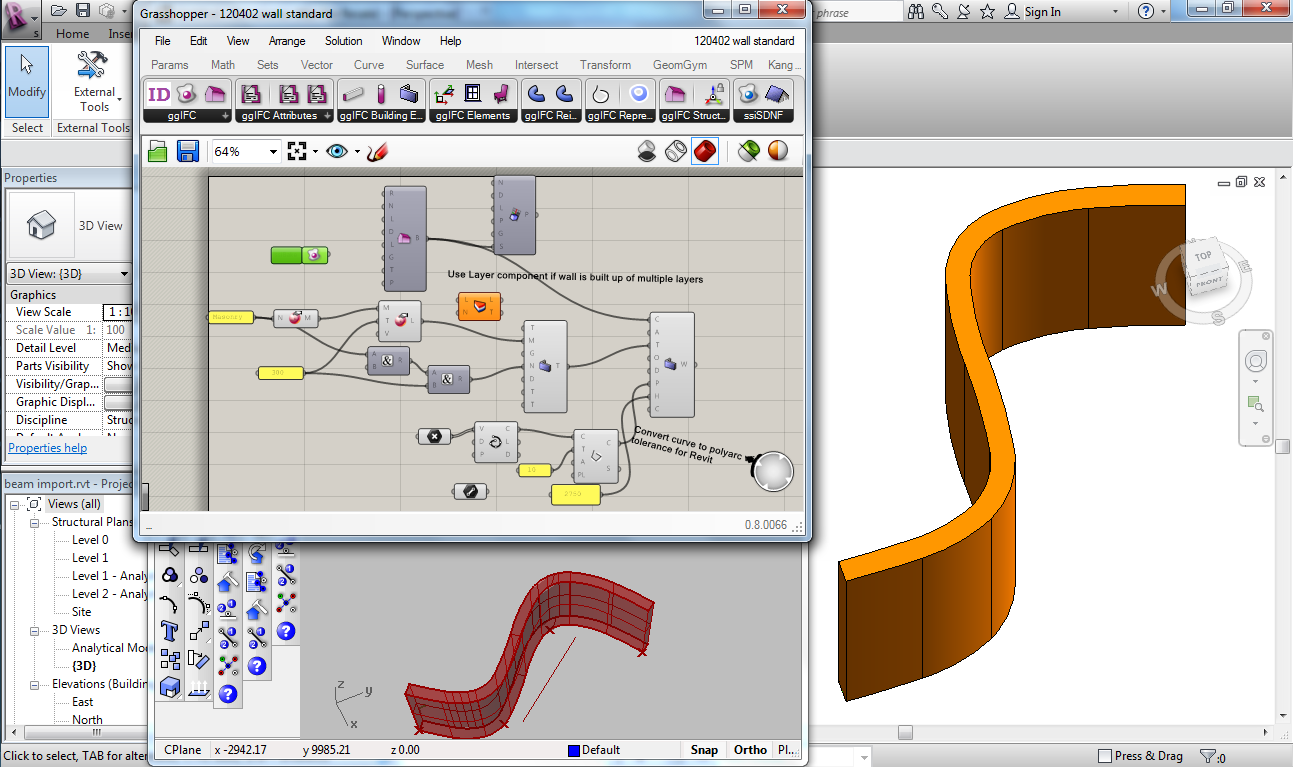Todays build (http://www.geometrygym.com/downloads) of the Rhino and Revit plugins includes improvements related to wall model exchange. This includes creation of families where they are not already loaded.
I initially started with testing the wall path curve as a NURBS (spline) curve, but Revit (2012) doesn't seem to permit spline paths so I used my BullAnt component to approximate it with a polycurve of arcs.
For the moment, the wall path curve has to be on the centroid (I'll look to enable face and offset locations) and I'll have to investigate whether I can enable my nurbs to polycurve routine using openNurbs outside of Rhino.
Look forward to hearing feedback and comments. Openings are one of the items next on my agenda. Improvements that come to mind include locking top/bottom to levels and I'm sure users can propose many more.
Grasshopper Model, IFC File
I initially started with testing the wall path curve as a NURBS (spline) curve, but Revit (2012) doesn't seem to permit spline paths so I used my BullAnt component to approximate it with a polycurve of arcs.
For the moment, the wall path curve has to be on the centroid (I'll look to enable face and offset locations) and I'll have to investigate whether I can enable my nurbs to polycurve routine using openNurbs outside of Rhino.
Look forward to hearing feedback and comments. Openings are one of the items next on my agenda. Improvements that come to mind include locking top/bottom to levels and I'm sure users can propose many more.
Grasshopper Model, IFC File







Hi, jon, I download your grasshopper model and change notthing,why i click ssibake,it shows "IFC porject not found in moel data, please add creat IFC porject component to canvas" I install the latest version .
ReplyDeleteHi, Does your definition look like the screen capture above? The middle top darker grey components in the canvas represent the building or project components. If you saved the model prior to installing the IFC plugin they may have been lost. Also make sure you have run the license request command in rhino (do you get orange or red components other than the one shown above?) Cheers, Jon
ReplyDeletehey jon
ReplyDeleteIs there a way to draw an inclined wall?
Hi Dhruv,
ReplyDeleteYou can define inclined walls in IFC, but it will not be "standard case". I haven't found a good way to generate an inclined wall in Revit (it's on my todo list). Even manually creating an inclined wall in Revit is not so straight forward. I'll likely implement a grasshopper component to easily define an inclined wall when I do.
Cheers,
Jon